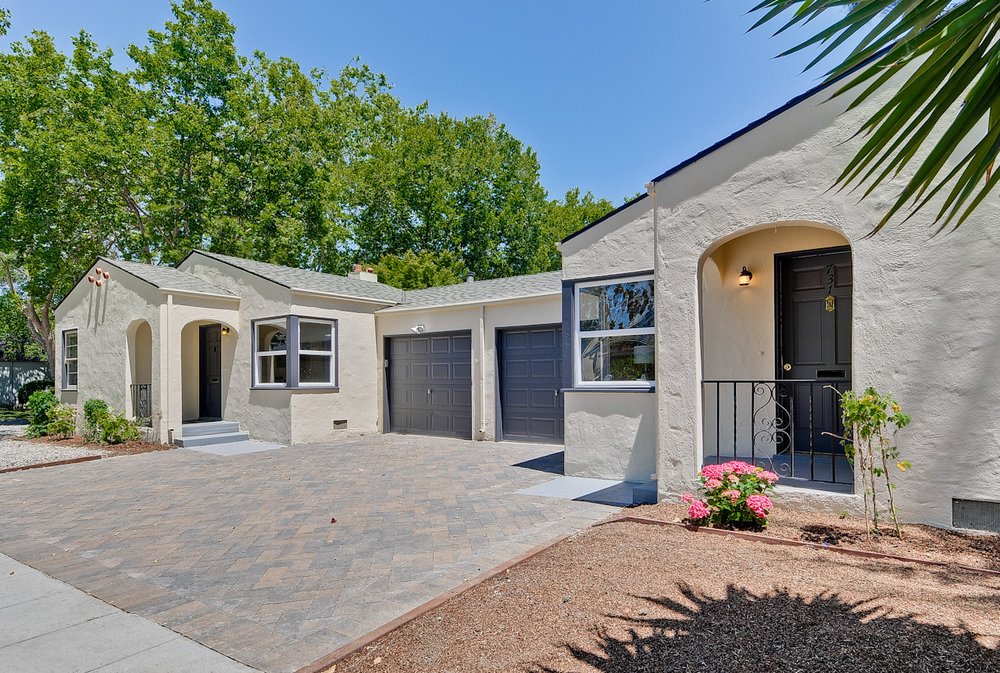A Guide to Gravel

Homeowners in the Bay Area are increasingly turning to gravel for their landscaping projects. That’s because gravel can be the right solution for many local landscaping problems. Gravel helps reduce soil erosion by slowing the flow of rainwater, and it’s an attractive groundcover option for areas where plants have difficulty growing. Also, since it doesn’t need irrigation, it’s a great solution for homeowners who want to reduce their water usage. Gravel can even help protect your home by acting as a barrier against encroaching wildfire.
For these reasons and more, gravel could be just what you need to improve your landscape. However, it comes in many varieties, so determining the right kind of gravel for your needs can be challenging. A highly qualified landscaping professional can help you determine the best way to use gravel on your property.
Types of Gravel
Commercial gravel producers offer a range of gravels, which are generally sourced from limestone or granite. The particle size and texture of gravel products vary, and each serves its own purpose for a landscape. Here are the most commonly used gravel options available to homeowners.
Decomposed granite
This is a finely crushed form of gravel that’s made up of very small stones and silt. Decomposed granite is applied in thin layers with a stabilizing agent that helps hold the materials together. The end result is a level, sturdy surface that can be used for patios or pathways. This type of gravel can also accommodate wheeled objects such as strollers, bicycles and trash bins. However, it does tend to track indoors from shoes and pets due to its powdery texture.
Crushed granite
When most people think of gravel, they imagine crushed granite. This material is made of rock that has been crushed and screened to a specific size. It’s commonly used for driveways, pathways and groundcover. Crushed granite can be a good alternative to mulch for Bay Area homes. It works well with drought-resistant plants and helps slow water absorption during rainstorms. Because granite is flame-resistant, it’s also a safe option to use as a decorative border adjacent to a home.
Because the pieces are small and irregular, they can easily get wedged in the soles of your shoes and cause damage to hardwood floors. For this reason, crushed granite isn’t the best option for an entryway.
Pea gravel
This material is made up of small pieces of rounded, polished rock. Pea gravel is often used for pathways, playground areas and as a mulch alternative in flower beds. It comes in a wide variety of colors, some of which are more rare (and costly) than others. It’s wise to install a border to keep pea gravel in place. More so than the other gravel varieties, pea gravel tends to displace easily and end up in other areas of the yard.
Its small size and smooth texture make pea gravel more comfortable to walk on, but these same features make it a challenging surface for moving anything on wheels. Similarly, it’s a somewhat unstable surface for outdoor furniture.
Other types of gravel
While decomposed granite, crushed granite and pea gravel are the most commonly used forms of gravel, there are many other options available. Lava rock (or scoria) can be used as groundcover or in flower beds. It’s richly textured, boldly colored and lighter than other forms of gravel. River rock is a popular gravel option for creating dry creek beds or designing a drainage route for a landscape.
Replacing Your Lawn With Gravel in the Bay Area
While some homeowners only want to use gravel for walkways, driveways or plant beds, other homeowners want to replace their entire lawns with gravel. Here are some factors to consider before making the transition.
- Think about your entire landscape and plan where you want to put trees and flower beds. Removing gravel later is labor-intensive.
- Gravel can be a good solution to pest problems. Insects and rodents will find little in the way of food in gravel.
- Gravel does absorb heat, so consider this when choosing colors and sun exposure for your project.
- Because it’s a hard, irregular surface, a gravel lawn may not be the right solution for households with young children or active pets.
Gravel Maintenance
While gravel doesn’t need the same level of maintenance as a grass lawn, it still requires regular upkeep to look its best and serve its function in the landscape. Leaves and other lightweight debris can be easily handled by a leaf blower. The big challenge with gravel maintenance is weed incursion. Landscapers will usually recommend installing a fabric weed barrier at the base of the gravel to limit the growth of invasive plants.
The gravel itself needs regular care, too. Additional layers of decomposed granite need to be added every few years as it wears down over time. Homeowners who choose pea gravel or crushed granite will need to regularly sweep gravel back into place after it has been displaced by cars or foot traffic. But compared to organic landscape features, gravel requires far less regular maintenance and has proven to be a durable option for Bay Area homes.
Use Diamond Certified Resource to find top rated companies.
Local, Top Rated Diamond Certified Companies Related to Your Topic
Contra Costa County Landscape Contractors
Marin County Landscape Contractors
San Mateo County Landscape Contractors
Alameda County Landscape Contractors
Santa Clara County Landscape Contractors
Related Articles
The Homeowner's Guide to Landscape and Lawncare
Get Expert Advice From Owners of Top Rated Local Companies
Become a Diamond Certified Preferred Member (Always Free)